America’s diverse landscapes offer some of the world’s most remarkable wildlife viewing opportunities. From the frigid waters of Alaska to the subtropical wetlands of Florida, the United States harbors extraordinary biodiversity and rare species that captivate wildlife enthusiasts. For those willing to venture into these natural havens, unforgettable encounters with elusive creatures await. This article explores 13 exceptional locations across America where patient observers can witness some of the country’s most uncommon and threatened wildlife in their natural habitats.
Yellowstone National Park, Wyoming

As America’s first national park, Yellowstone remains one of the premier wildlife viewing destinations in the country. The park’s 2.2 million acres provide sanctuary for the largest concentration of mammals in the lower 48 states. Lamar Valley, often called “America’s Serengeti,” offers visitors the rare opportunity to observe the once-endangered gray wolf, reintroduced to the park in 1995 after a 70-year absence. Early mornings and evenings in the valley provide the best chances for spotting these elusive predators. Beyond wolves, Yellowstone harbors grizzly bears, wolverines, and one of the last free-roaming bison herds in North America, with approximately 5,000 individuals roaming the park’s vast meadows and forests.
Everglades National Park, Florida
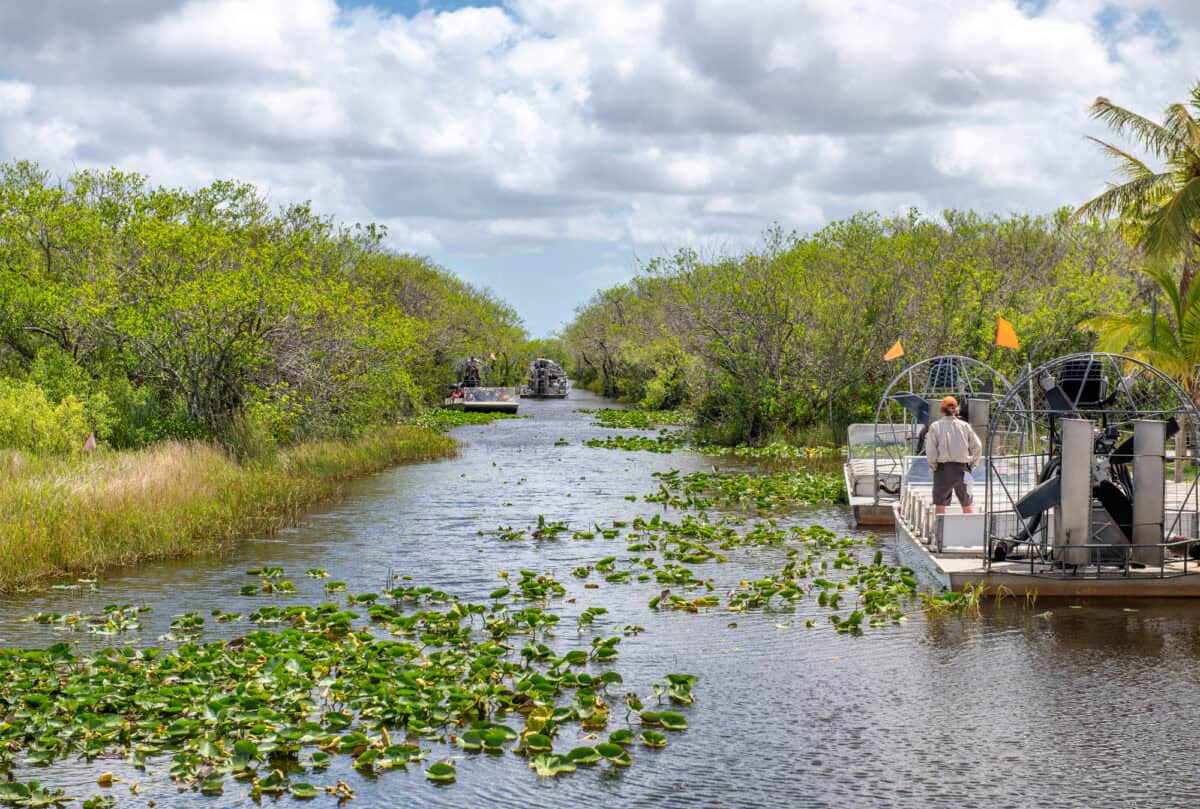
This UNESCO World Heritage Site encompasses 1.5 million acres of wetlands and represents the largest subtropical wilderness in the United States. The Everglades shelters over 40 threatened or endangered species, including the critically endangered Florida panther, of which fewer than 200 remain in the wild. While panthers are exceptionally difficult to spot, visitors can increase their chances by exploring trails near Fakahatchee Strand Preserve State Park during early morning hours. The Anhinga Trail offers excellent opportunities to observe American alligators, while wading birds like the endangered wood stork and roseate spoonbill frequent the shallow waters throughout the park. The Everglades also provides vital habitat for the West Indian manatee, best spotted during winter months when cooler temperatures drive these gentle giants into warmer waters.
Kodiak National Wildlife Refuge, Alaska
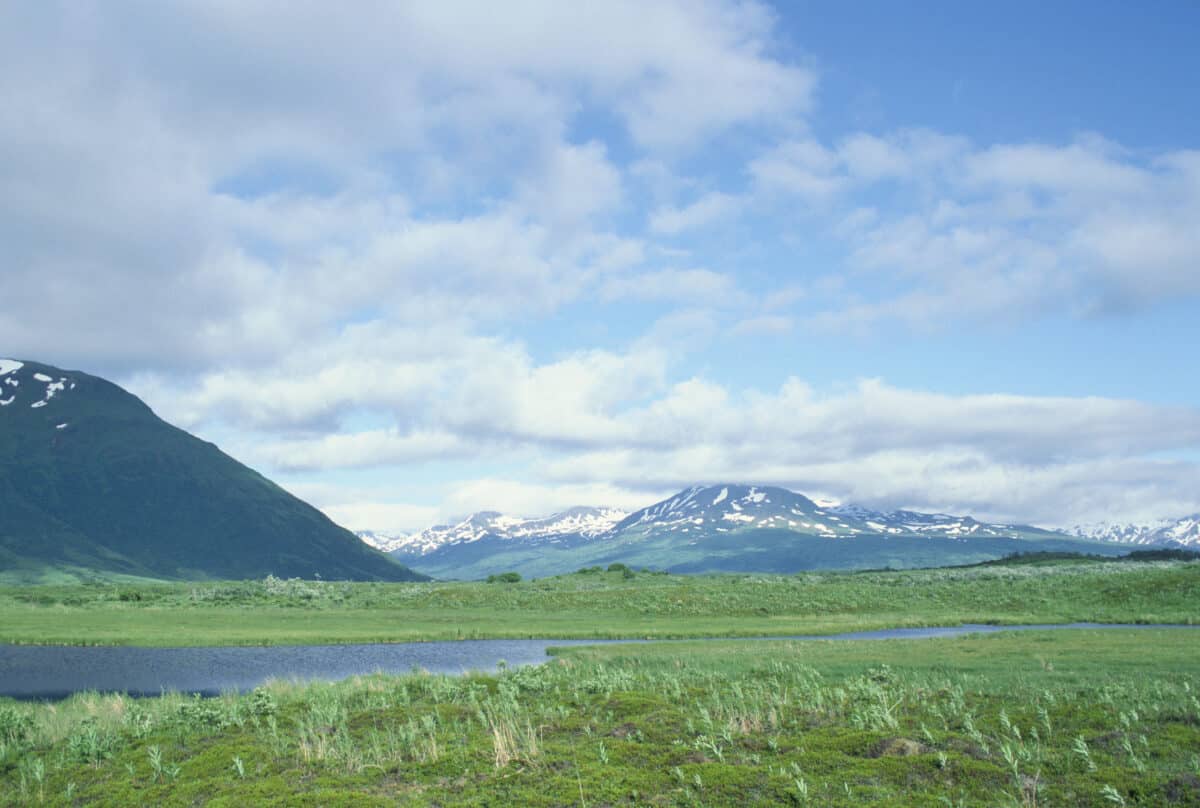
Home to approximately 3,500 Kodiak bears, this refuge on Kodiak Island protects the world’s largest subspecies of brown bear. These magnificent creatures can weigh up to 1,500 pounds and stand 10 feet tall when on their hind legs. The refuge covers nearly two-thirds of Kodiak Island, offering pristine wilderness for wildlife viewing during the summer salmon runs from June through September. Guided tours provide safe opportunities to witness these massive bears fishing for salmon in streams, an unforgettable wildlife spectacle. Beyond bears, the refuge supports diverse marine mammals, including harbor seals, sea lions, and sea otters along its rugged coastline. The Kodiak archipelago also hosts approximately 250 species of birds, including the magnificent bald eagle and rare McKay’s bunting.
Isle Royale National Park, Michigan

This remote island wilderness in Lake Superior offers a unique opportunity to observe one of America’s most fascinating predator-prey relationships. For over 60 years, scientists have studied the interactions between Isle Royale’s wolves and moose, making it the longest-running predator-prey study in the world. The island’s isolation has created a natural laboratory where visitors can potentially witness these ecological dynamics firsthand. With fewer than 15 wolves and approximately 1,800 moose, the island demonstrates nature’s delicate balance. The park’s isolation (accessible only by boat or seaplane) creates an undisturbed wilderness experience. Visitors hiking the island’s 165 miles of backcountry trails might also encounter red foxes, beavers, and over 200 species of birds, including rare northern species like the boreal chickadee and gray jay.
Channel Islands National Park, California

Often called “North America’s Galápagos,” these five islands off the coast of Southern California harbor numerous endemic species found nowhere else on Earth. The Channel Islands fox, one of the smallest fox species in the world, represents one of the most remarkable conservation success stories in American history. After nearly going extinct in the 1990s with fewer than 100 individuals, intensive recovery efforts have restored populations to over 2,000. The surrounding waters provide exceptional opportunities to observe marine mammals, including blue whales—the largest animals ever to exist on Earth—during summer feeding migrations. The park also protects breeding grounds for endangered California sea lions and harbor seals. Birdwatchers can spot the rare island scrub-jay, which exists exclusively on Santa Cruz Island and nowhere else on the planet.
Great Smoky Mountains National Park, Tennessee/North Carolina

Despite being America’s most visited national park, the Great Smokies harbor remarkable biodiversity and several rare species within their ancient forests. The park serves as the epicenter for one of nature’s most spectacular displays—the synchronous fireflies. For roughly two weeks each June, thousands of Photinus carolinus fireflies flash in perfect unison, creating a mesmerizing natural light show found in only a handful of places worldwide. This Appalachian treasure also shelters over 1,500 black bears, providing one of the best opportunities to observe these intelligent omnivores in the eastern United States. The park’s 800+ miles of trails wind through old-growth forests where visitors might encounter rare creatures like the endangered Indiana bat, red-cheeked salamander (part of the park’s incredible salamander diversity—with more species than anywhere else in the world), and even remnant elk populations reintroduced in 2001.
Kauai’s Napali Coast, Hawaii

The dramatic cliffs and valleys of Kauai’s northwest shore provide critical habitat for some of Hawaii’s rarest and most endangered native birds. The remote Alakaʻi Wilderness Preserve offers intrepid hikers the chance to spot the ‘akeke’e and ‘akikiki, critically endangered honeycreepers with fewer than 1,000 individuals remaining in the wild. These forest birds, found nowhere else on Earth, have adapted over millions of years to Hawaii’s unique ecosystem. The coastal waters surrounding the Napali Coast also harbor Hawaiian monk seals, with a population of just 1,400 individuals, making them one of the most endangered marine mammals in the world. Spinner dolphins, easily recognized by their acrobatic leaps and spins, frequently visit the coastal waters, while green sea turtles can be spotted feeding in nearshore areas. The isolation of these Hawaiian landscapes has preserved species found nowhere else, though introduced predators and habitat loss continue to threaten these evolutionary marvels.
Monterey Bay National Marine Sanctuary, California
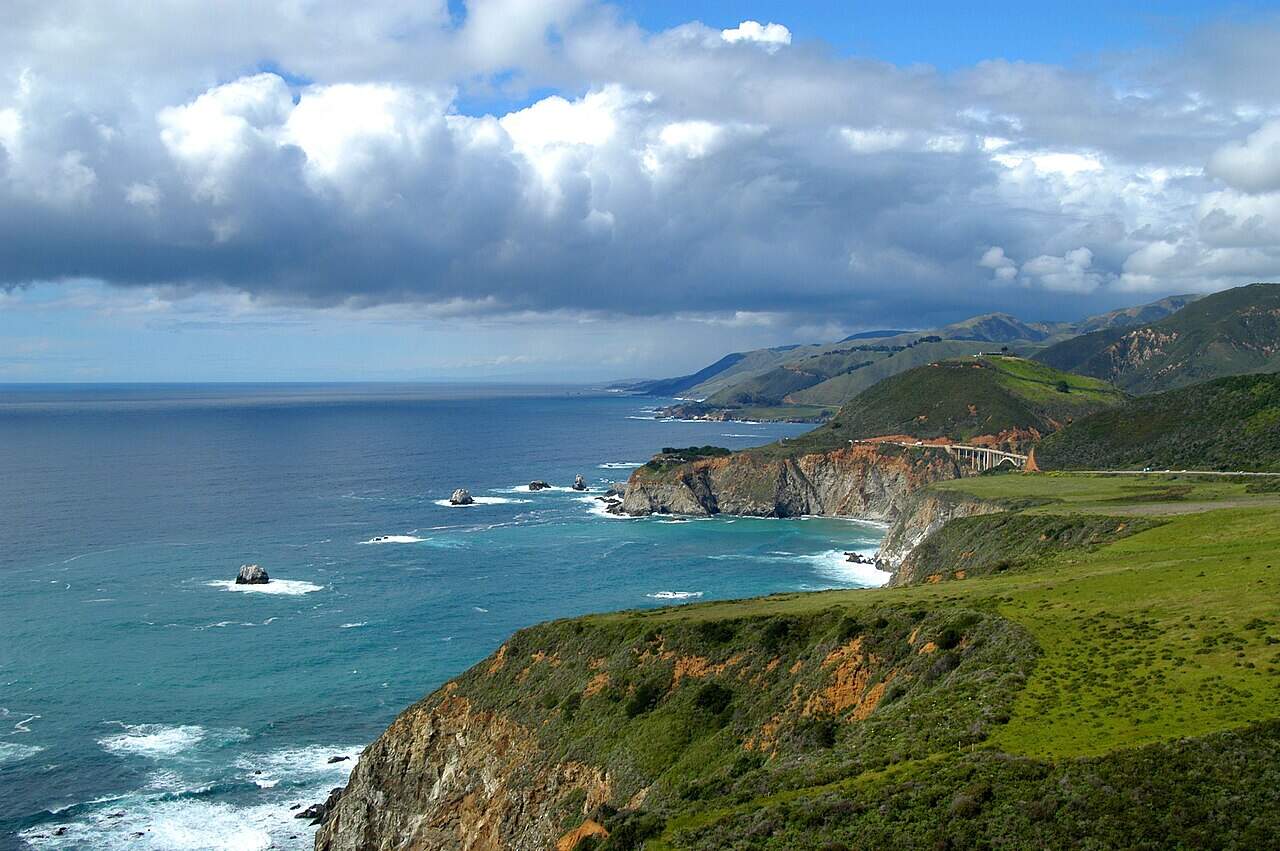
This underwater treasure encompasses 276 miles of spectacular California coastline and contains one of North America’s largest submarine canyons, deeper than the Grand Canyon. The sanctuary’s nutrient-rich waters support an extraordinary diversity of marine life, including rare and endangered species. Visitors can observe the threatened southern sea otter, with approximately 3,000 individuals remaining along the California coast. These charismatic marine mammals can be spotted from shoreline lookouts at Point Lobos State Natural Reserve or while kayaking in Elkhorn Slough. The sanctuary’s waters also provide critical habitat for 36 species of marine mammals, including blue whales, humpback whales, and the mysterious beaked whales, rarely seen due to their deep-diving behavior. Monterey Bay Aquarium operates wildlife tours that offer incredible opportunities to witness leatherback sea turtles, great white sharks, and the occasional sunfish (Mola mola), one of the ocean’s most peculiar large creatures.
Okefenokee National Wildlife Refuge, Georgia

This vast 438,000-acre wetland represents one of the oldest and most well-preserved freshwater ecosystems in America. The mysterious blackwater swamp creates a primeval landscape where visitors can paddle among ancient cypress trees draped in Spanish moss. The refuge protects critical habitat for the American alligator, once endangered but now recovered, with approximately 15,000 individuals inhabiting the swamp. Early morning canoe trips provide excellent opportunities to observe these prehistoric reptiles basking in the sun. The Okefenokee also shelters the endangered red-cockaded woodpecker, identifiable by its distinctive white cheek patch, and over 200 other bird species. The refuge’s remote eastern wilderness offers the possibility of glimpsing the elusive Florida black bear, while night excursions might reveal the red eyes of numerous amphibians reflecting in flashlight beams, including the rare one-toed amphiuma, a strange eel-like salamander that can grow up to three feet long.
Denali National Park, Alaska
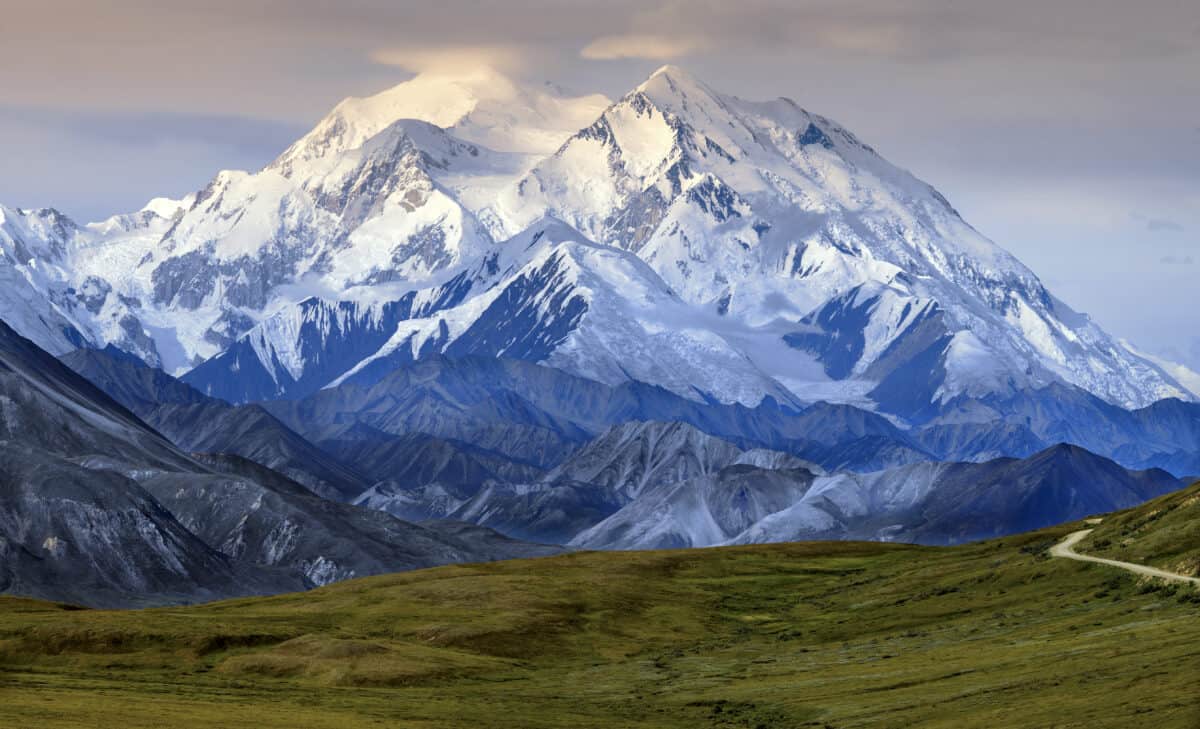
Six million acres of wild landscape provide sanctuary for some of North America’s most impressive mammals. Denali offers what many consider the best opportunity to observe the “Big Five” of Alaskan wildlife: grizzly bears, wolves, moose, caribou, and Dall sheep. The park’s limited access road system creates a wilderness experience where these animals roam freely with minimal human interference. Approximately 300-350 wolves in about 30 packs inhabit the greater Denali ecosystem, while approximately 2,700 Dall sheep—known for their curved horns and remarkable agility on steep terrain—inhabit the park’s mountains. During the autumn months, visitors might witness the dramatic caribou migration as thousands of animals move through the park. Denali also provides habitat for wolverines, one of North America’s most elusive predators, though spotting these solitary animals requires exceptional luck and patience.
The Outer Banks, North Carolina
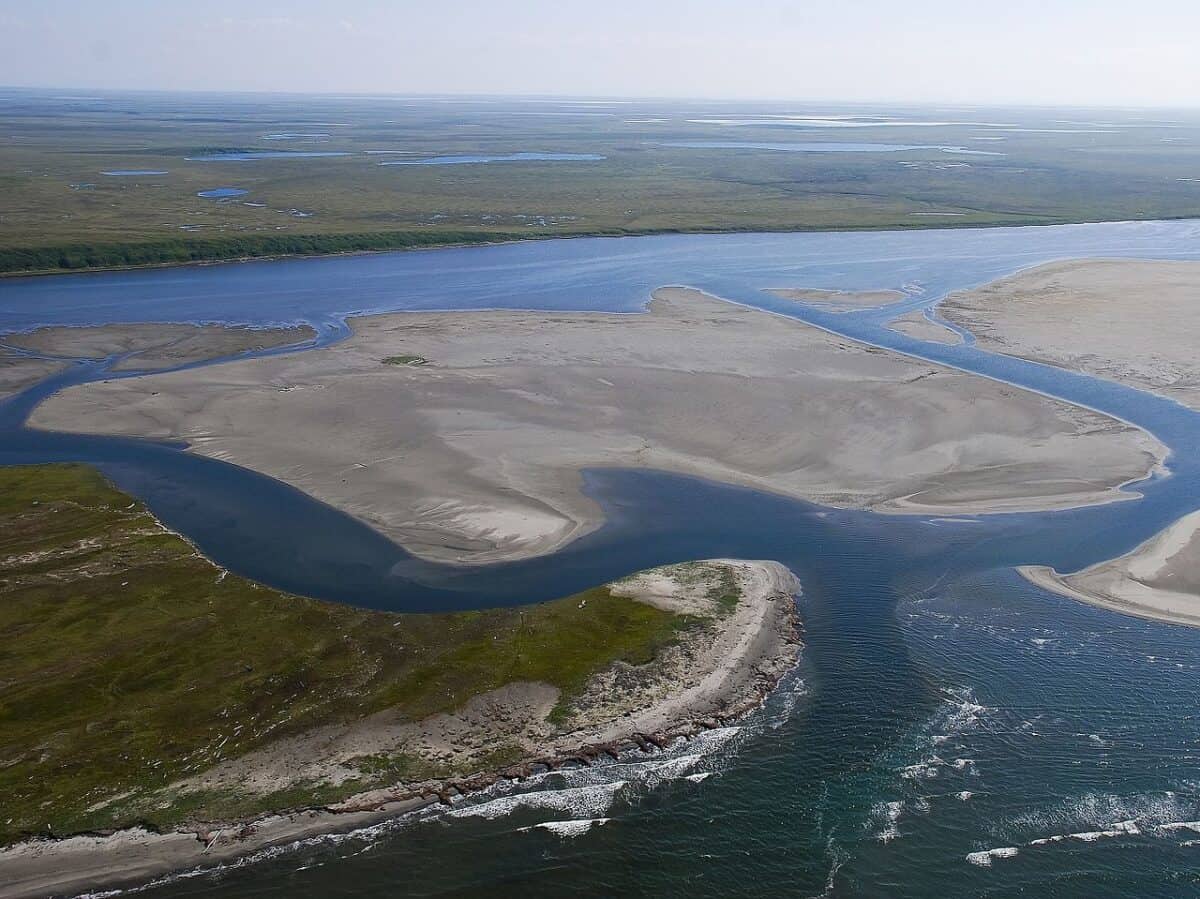
These barrier islands along North Carolina’s coast host one of America’s most unusual wild horse populations. The Corolla wild horses are descendants of Spanish mustangs that arrived with explorers over 500 years ago and have adapted to thrive in this harsh coastal environment. Approximately 100 horses roam freely across the northern beaches, representing one of the last remaining wild horse populations in the eastern United States. Four-wheel-drive tours provide opportunities to observe these magnificent animals feeding among the dunes and salt marshes. The Outer Banks also serve as critical habitat for nesting sea turtles, with loggerhead, green, and occasionally the critically endangered Kemp’s ridley turtles coming ashore between May and August to lay their eggs. The region’s extensive marshlands and estuaries attract over 400 bird species, including the threatened piping plover, which nests on the islands’ sandy beaches. The Pea Island National Wildlife Refuge offers exceptional birdwatching opportunities, particularly during spring and fall migrations.
Ding Darling National Wildlife Refuge, Florida
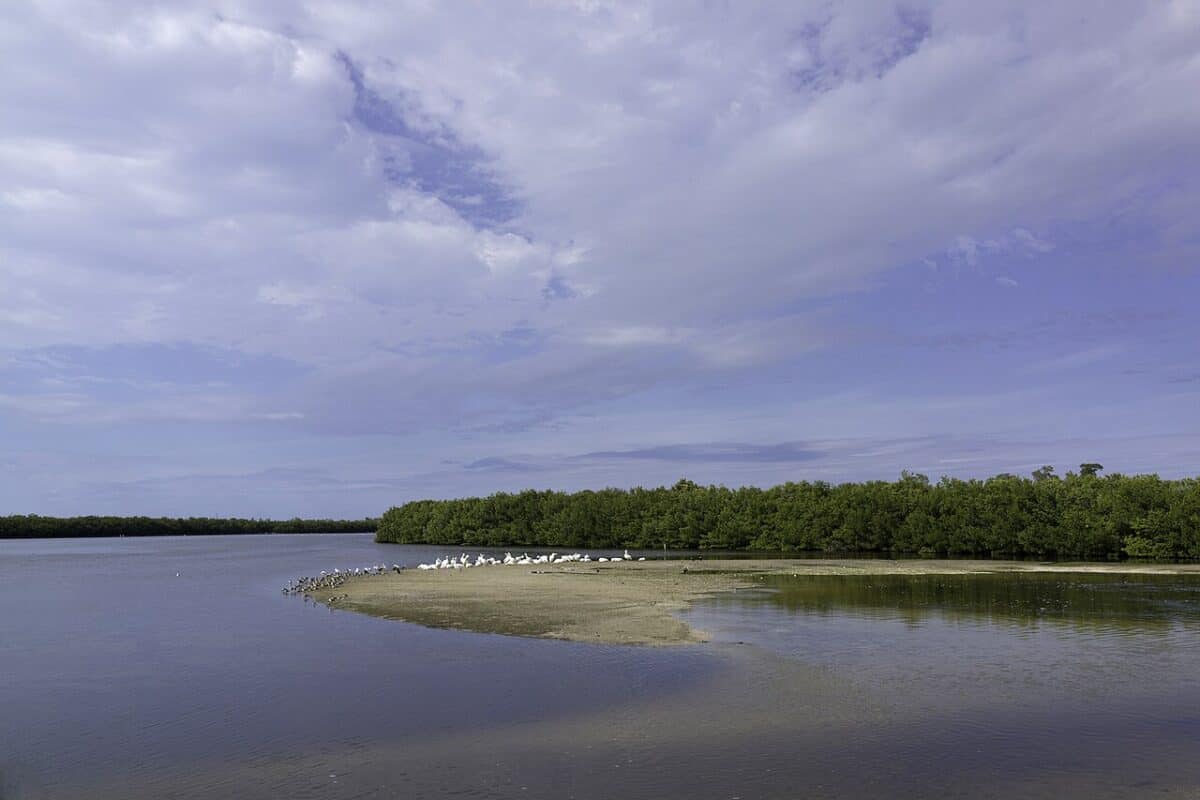
Located on Sanibel Island, this 6,400-acre refuge provides critical wintering habitat for numerous rare and threatened bird species. The refuge’s Wildlife Drive offers an accessible way to observe the spectacular roseate spoonbill, with its distinctive pink plumage and spatula-shaped bill. Over 245 bird species have been documented in the refuge, including the endangered wood stork and threatened American crocodile. Unlike the more common American alligator, crocodiles are extremely rare in the United States, with fewer than 2,000 individuals remaining, primarily in southern Florida. The refuge’s mangrove forests and seagrass beds also support manatees, especially during winter months when they seek warmer waters. Kayaking through the refuge’s winding waterways provides opportunities to observe Atlantic bottlenose dolphins, nine-banded armadillos, and marsh rabbits. The refuge’s location along the Atlantic Flyway makes it particularly important for migratory birds, with peak viewing opportunities from December through April.
Katmai National Park, Alaska
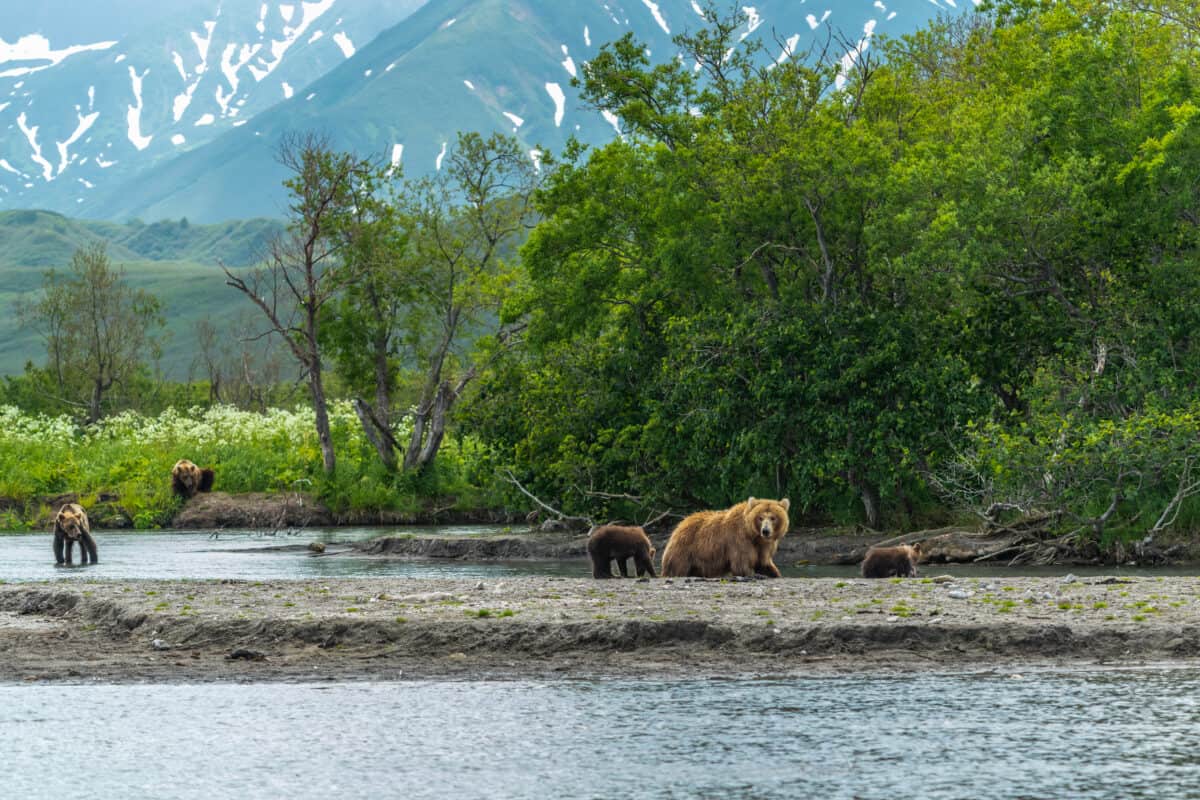
World-famous for its brown bear viewing opportunities, Katmai preserves over four million acres of pristine wilderness. The park’s Brooks Falls has become an iconic location where visitors can safely observe dozens of massive brown bears fishing for salmon during the summer runs. July typically offers the best viewing opportunities as sockeye salmon attempt to leap the falls, creating a spectacular natural feeding station where bears congregate. Approximately 2,200 brown bears inhabit the park, representing one of the most concentrated and accessible bear viewing opportunities in the world. Beyond bears, Katmai protects habitat for wolves, lynx, wolverines, and over 40 species of mammals. The Valley of Ten Thousand Smokes, formed by the massive 1912 Novarupta volcanic eruption, creates an otherworldly landscape where visitors might glimpse the elusive Alaskan caribou traversing the ash-filled valley. The park’s remote location, accessible primarily by floatplane, ensures a true wilderness experience with minimal human impact.
Conclusion: America’s Wildlife Treasures

America’s diverse landscapes offer extraordinary opportunities to connect with rare and remarkable wildlife, from the iconic grizzly bears of Yellowstone to the mysterious synchronized fireflies of the Great Smoky Mountains. These 13 destinations represent just a fraction of the country’s natural treasures, each offering unique wildlife viewing experiences that can foster a deeper appreciation for conservation efforts and ecological diversity. When visiting these special places, practicing responsible wildlife viewing is essential—maintain safe distances, follow park regulations, and minimize your impact on these delicate ecosystems. As climate change and habitat loss increasingly threaten wildlife populations worldwide, these protected areas become even more crucial for preserving America’s natural heritage for future generations. By experiencing these remarkable wildlife encounters firsthand, visitors can become advocates for conservation, ensuring these rare species continue to thrive in their natural habitats.
- Dog Breeds with the Longest Lifespans: Companions for Life - August 25, 2025
- 13 Animals That Changed the Course of Science - August 25, 2025
- 10 Largest Birds That Soar Over the U.S. - August 25, 2025

